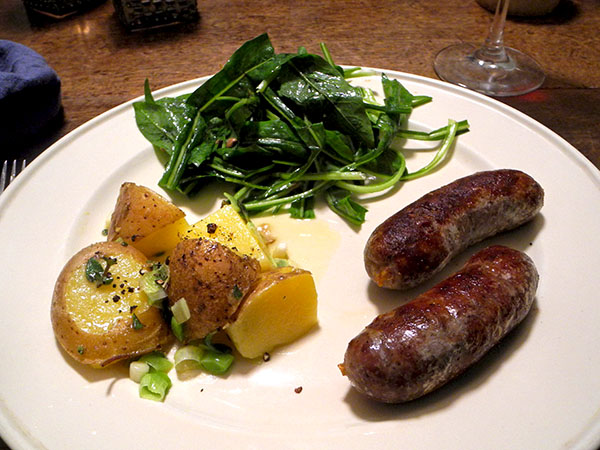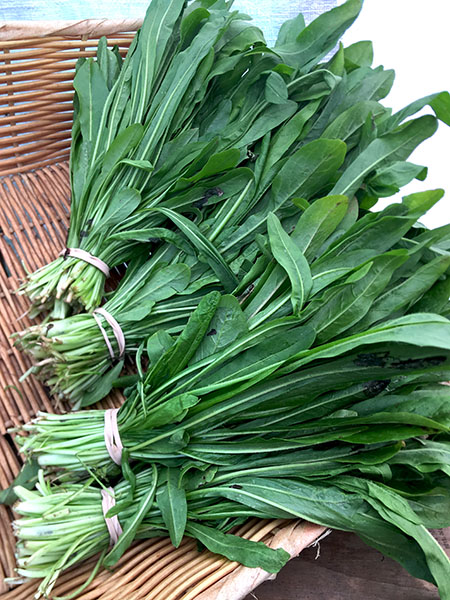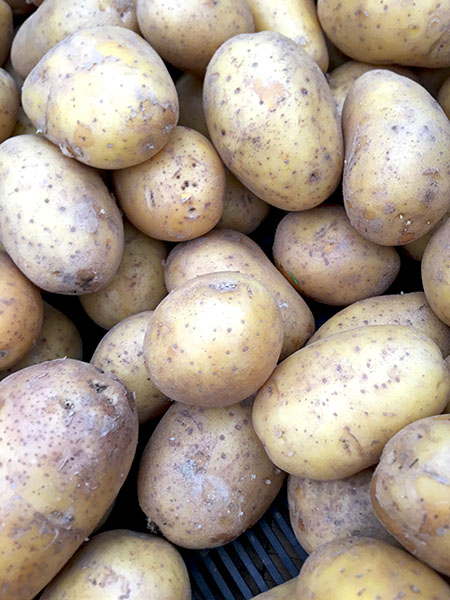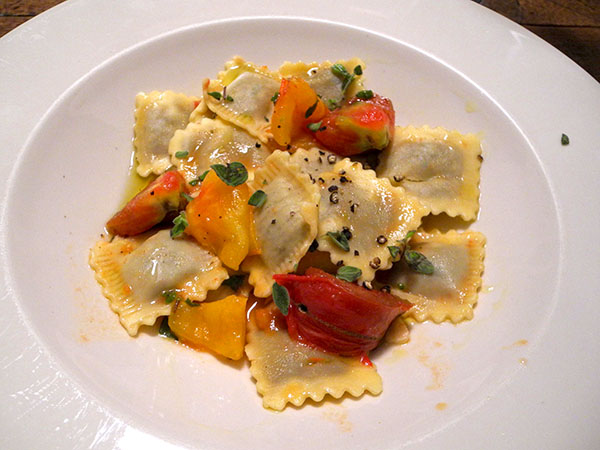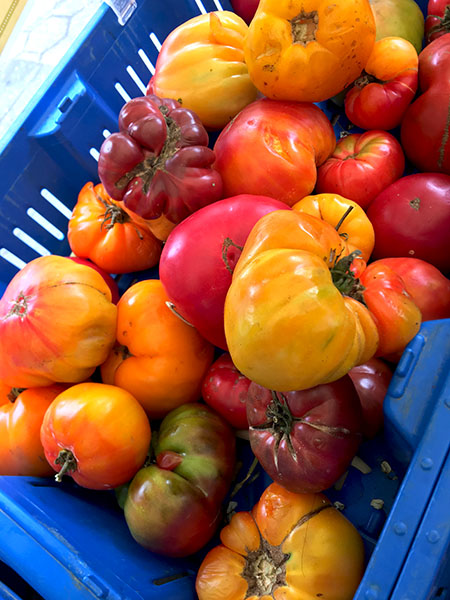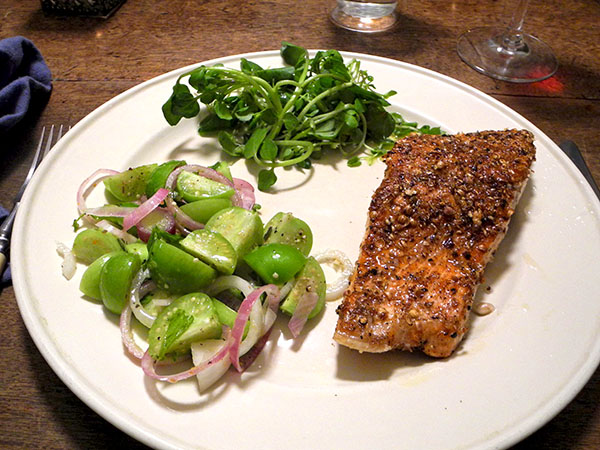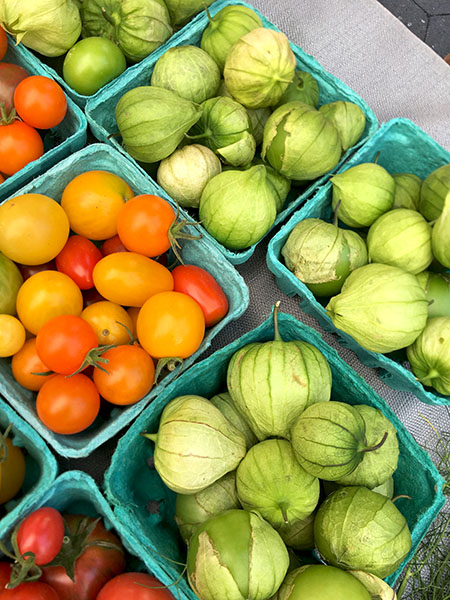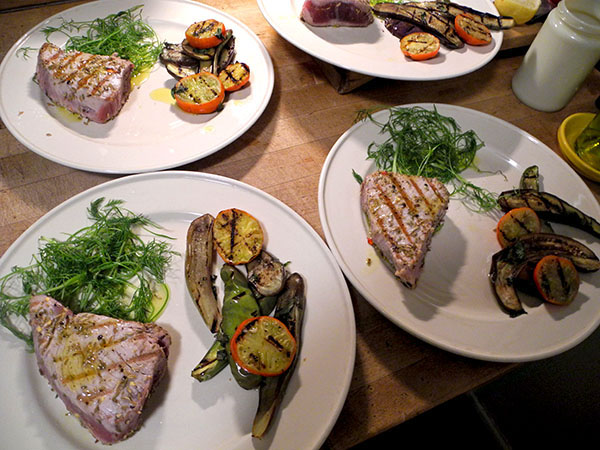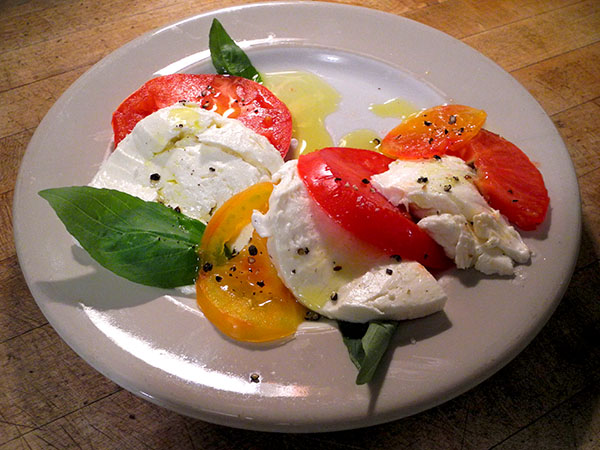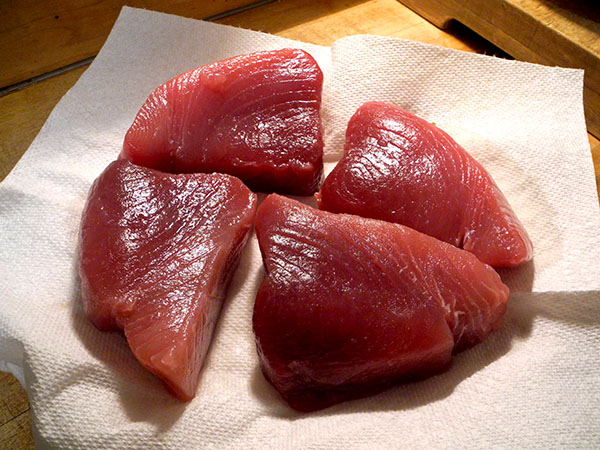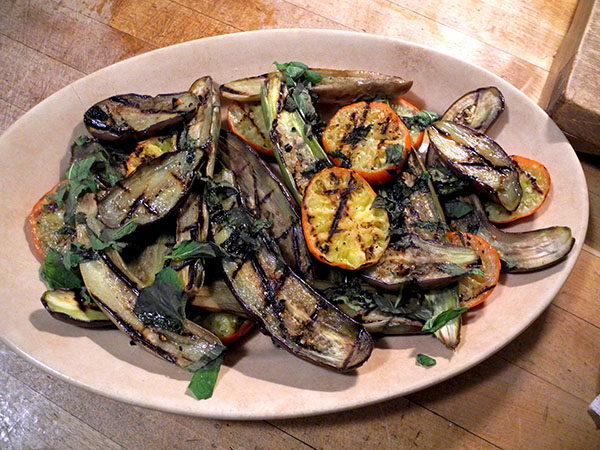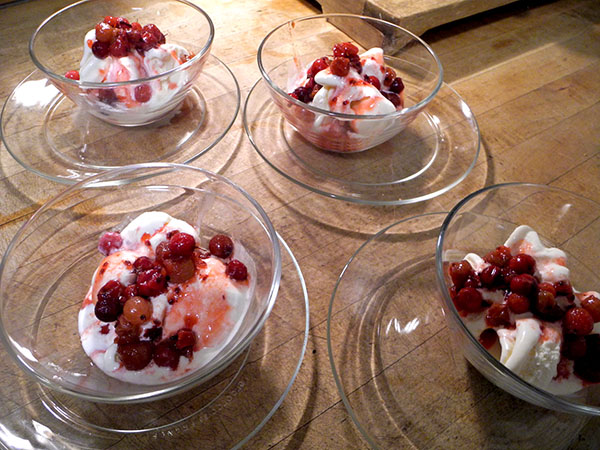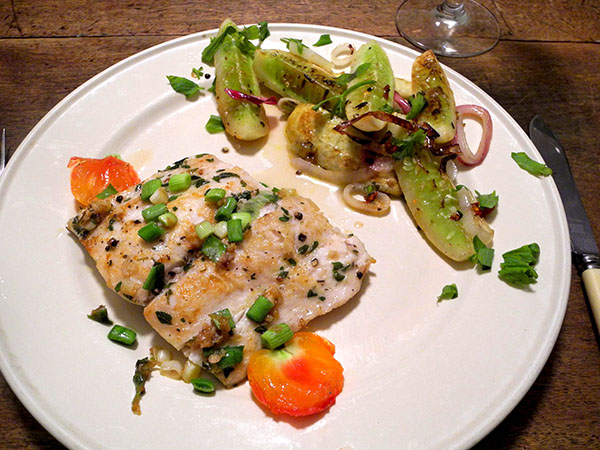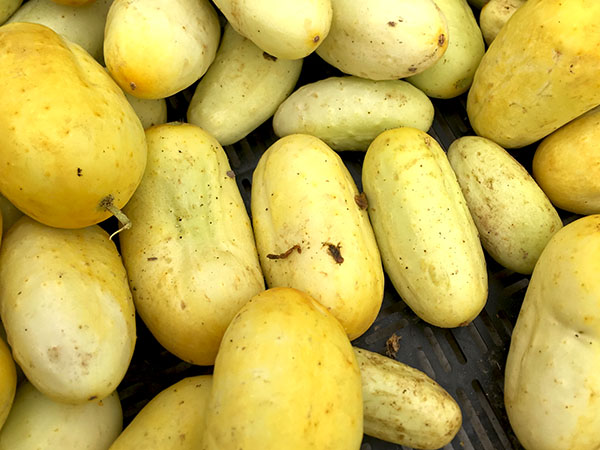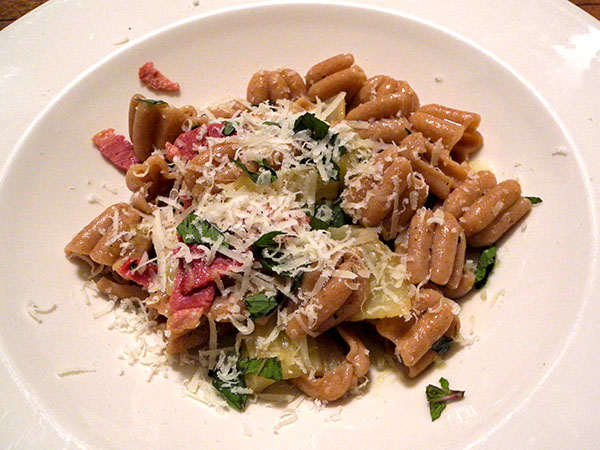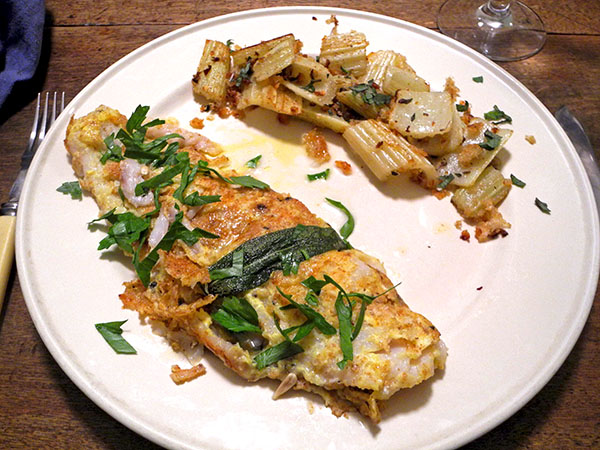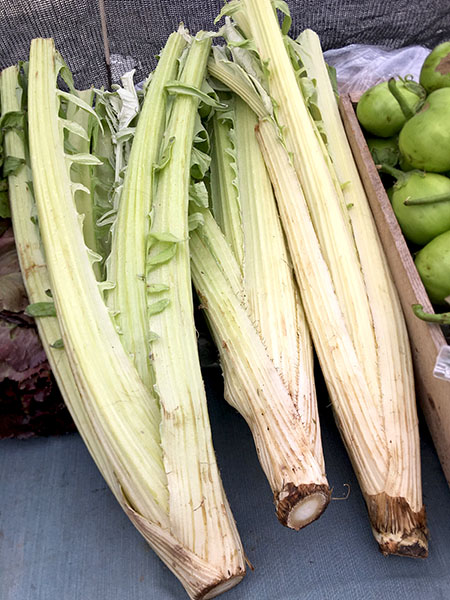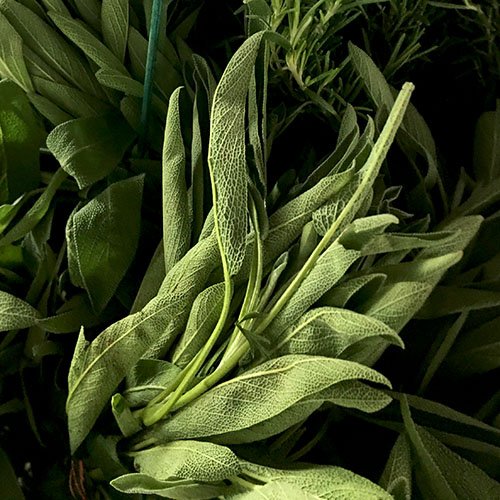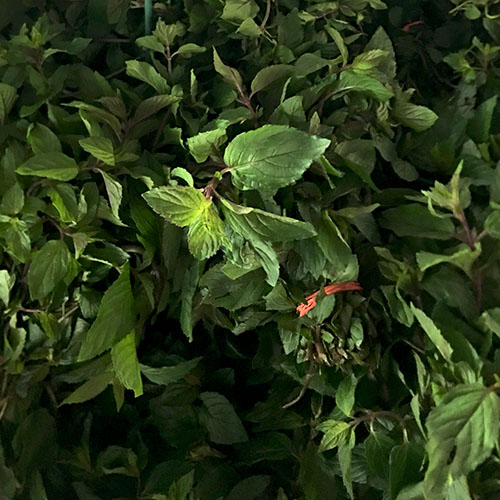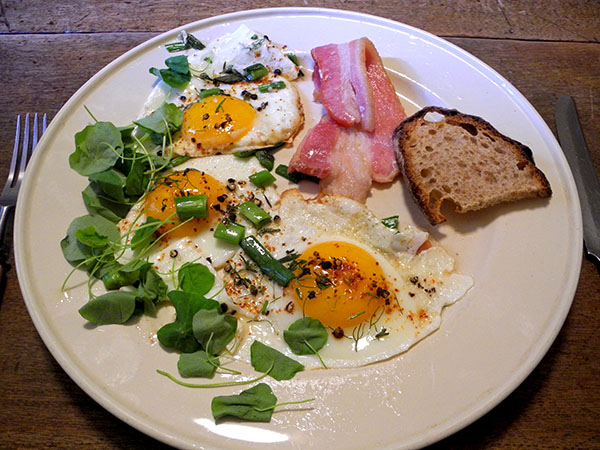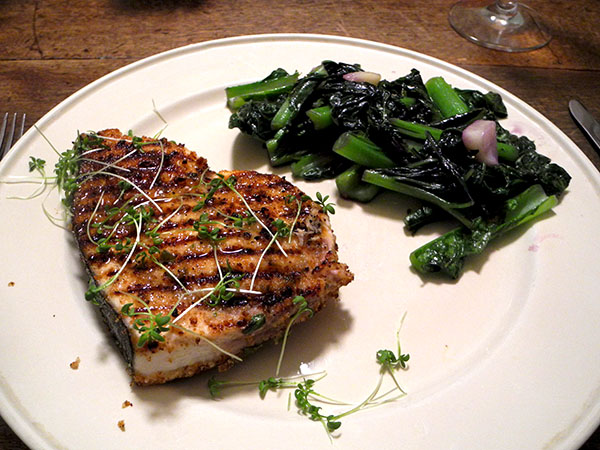
The swordfish itself, plus the recipe of course, and, yeah, my modest part (which was just taking it off the grill at the right moment) came together beautifully.
And then there was this incredibly good mustard. I had picked it because it would be quick and easy on a night when I didn’t have much time to put a meal together but it was much, much more than just a placeholder.
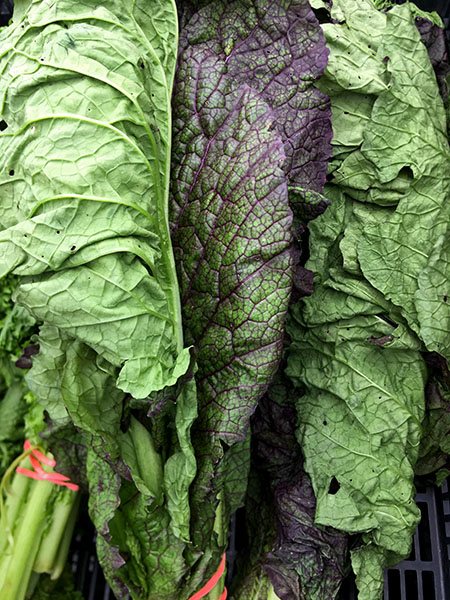
- one very fresh 16-ounce swordfish steak from Blue Moon Fish, divided into 2 pieces at home, marinated for half an hour in a mixture of olive oil, one spring red onion from N.J. Jersey Farm Produce, Inc., some chopped fresh oregano buds from Norwich Meadows Farm, and a very small amount of crushed dried peperoncino Calabresi secchi from Buon Italia, drained well, coated on both sides with some homemade dried breadcrumbs, and pan-grilled over medium-high heat for 4 to 5 minutes on each side, removed to 2 plates, seasoned with Maldon salt, some of the juice of an organic lemon from Whole Foods Market squeezed on top, drizzled with a little olive oil, and sprinkled with micro lemon peppercress (yes, it really is lemony, and peppery) from Two Guys from Woodbridge
- one bunch of red mustard from Keith’s Farm, wilted inside a large high-sided tin-lined copper pot in a little olive oil in which 2 halved cloves of garlic from Lucky Dog Organic Farm had been allowed to sweat, then seasoned with sea salt, freshly-ground Tellicherry pepper, and a very small amount of crushed dried peperoncino Calabresi secchi from Buon Italia, finished on the plates with a drizzle of juice from an organic lemon from Whole Foods Market and a bit of olive oil
- the wine was an Italian (Sicily) rosé, Gerbino Rosato di Nerello Mascalese 2016, from Eataly Vino
- the music was the album, ‘Sieur de Sainte-Colombe: Concerts a Deux Violes Esgales’
